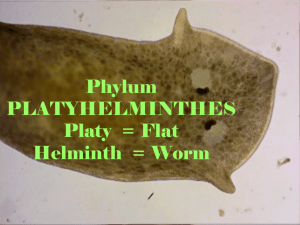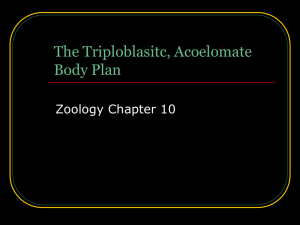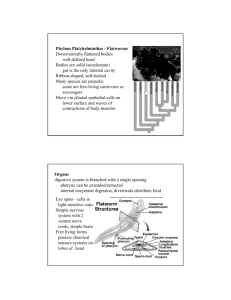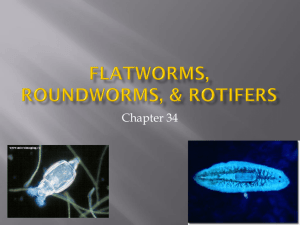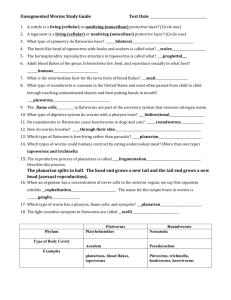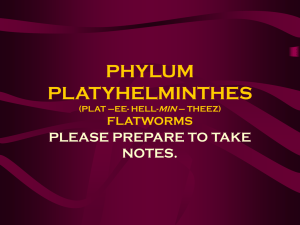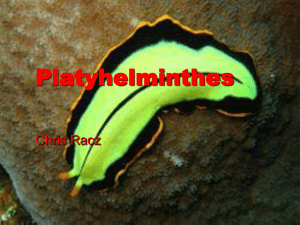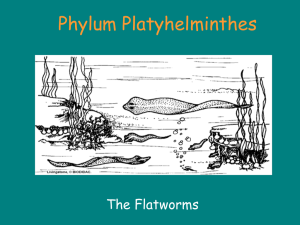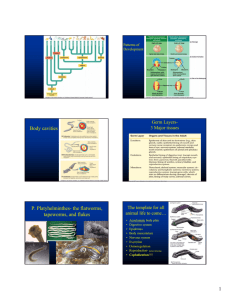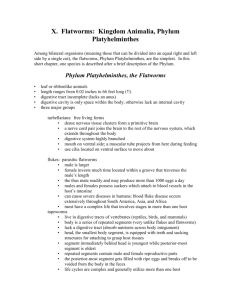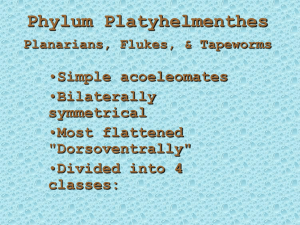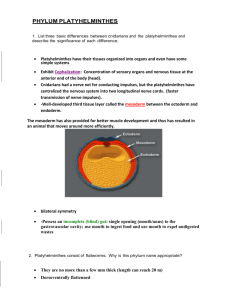Phylum Platyhelminthes
advertisement
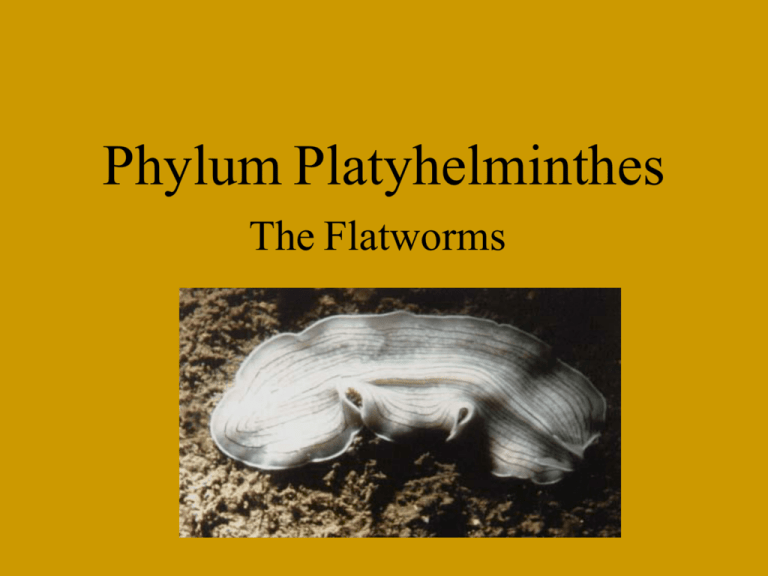
Phylum Platyhelminthes The Flatworms Phylum Platyhelminthes Examples include: Planaria Tapeworms Flukes Polyclad flatworms Characteristics • • • • • Bilateral symmetry Flattened bodies 12,000+ species 1 mm to 10 m Most aquatic or parasitic • External suckers or hooks More Characteristics • No coelom • Digestive tube with mouth, anus, and intestine. • Food in through mouth, undigested food leaves through pharynx Muscles are both longitudinal and circular Classification Phylum Platyhelminthes The Flatworms Class Turbellaria Free living worms Class Trematoda Parasitic flukes Class Monogenea Parasitic flukes usually on fish Class Cestoda Tapeworms Class Turbellaria • Planaria • Polyclad flatworms (marine) • Creeping motion achieved through muscles and cilia • Only class containing free living worms Class Trematoda • All parasitic flukes • Infect vertebrates, including humans • Leaflike form • Hooks or suckers • Liver fluke, blood fluke, lung flukes, swimmer’s itch Class Monogenea • Parasitic flukes, primarily on gills or external features of fish • Direct life cycle, with a single host Class Cestoda • Tapeworms • Internal parasites of vertebrates, including humans • Holdfast called scolex • 1000+ species • Life cycle requires two hosts
